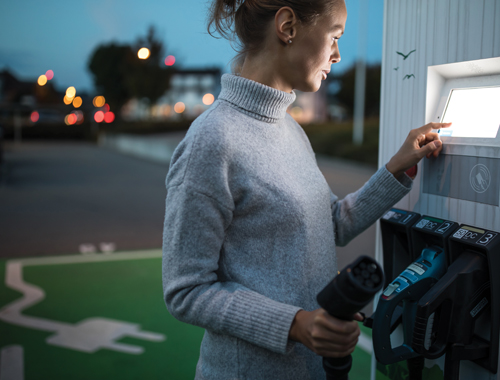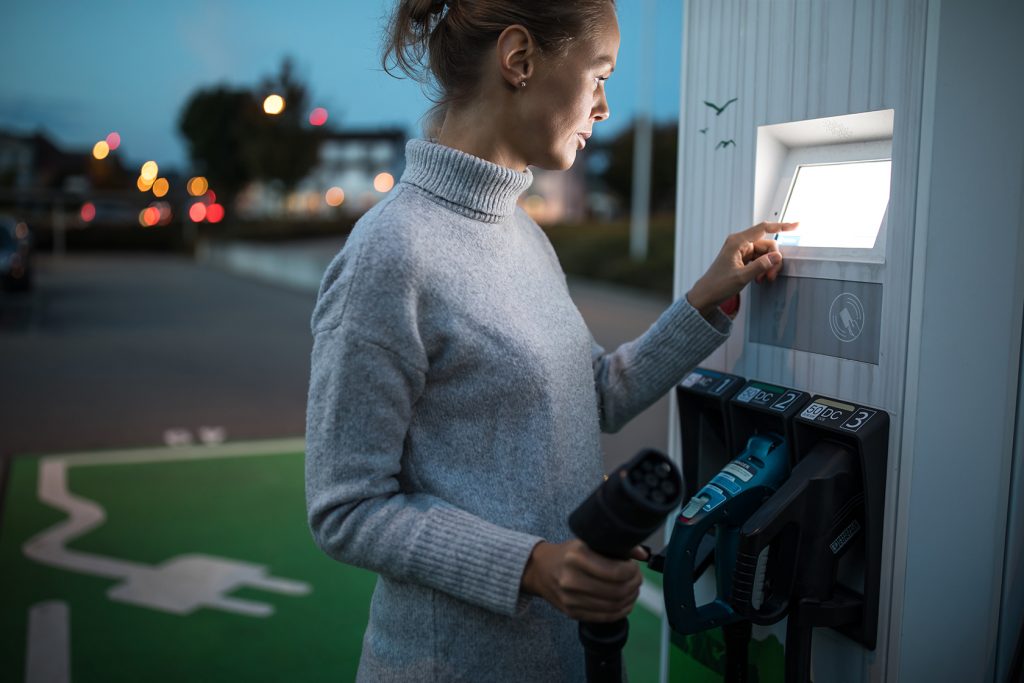
20 Apr How a Robust Charging Infrastructure Benefits Utilities
 In this five-part blog series, we will dissect the key areas of a transportation electrification strategy. These points are expanded upon in D+R’s white paper, “A Utility Roadmap for Transportation Electrification.”
In this five-part blog series, we will dissect the key areas of a transportation electrification strategy. These points are expanded upon in D+R’s white paper, “A Utility Roadmap for Transportation Electrification.”
The series includes:
Part 1: Successful EV Programs Begin with Collaboration
Part 2: How a Robust Charging Infrastructure Benefits Utilities
Part 3: What Makes an Effective EV Incentive Program
Part 4: How to Educate Consumers About the Benefits of EVs
Part 5: How to Ensure Grid Reliability for an Electrified Transportation Future
BY MADDIE SLIGH, D+R INTERNATIONAL
While the rise of Electric Vehicle (EV) use causes some uncertainty for utilities, they can develop strategies to prepare for and even lead the EV revolution. In our last blog post, we gave an overview of why it is important for utilities to coordinate and collaborate with policymakers and the public when developing a transportation electrification strategy. In this blog, we will overview another key component of a utility’s transportation electrification strategy: expanding electrical vehicle supply equipment (EVSE) infrastructure in their service area. These strategies, and others, are laid out in more detail in D+R International’s white paper, “A Utility Roadmap for Transportation Electrification.”
What is EVSE?
Electric Vehicle Supply Equipment (EVSE) is the equipment needed on the customer side to safely charge electric vehicles. It includes three types:
- Level I: Connects to standard 120 V AC wall outlet and provides 2-5 miles of range per hour of charge.
- Level II: Connects to 240 V AC wall outlet and provides 10-60 miles of range per hour of charge.
- DC Fast Charger: Connects to DC power and delivers 50 kW or more to charge an EV battery to 80% in 20 minutes.
Why is EVSE important?
Consumers often cite a lack of charging infrastructure – not being able to charge whenever needed – as one of the main barriers to purchasing an EV. Utilities may feel like investing in infrastructure is premature when there are currently only a small number of EVs on the road, but this chicken and egg dynamic could be preventing the widespread adoption of EVs in utilities’ service areas. Utilities may also wish to allow private companies and commercial building owners to take the lead on EVSE infrastructure, but there are other benefits of publicly-owned and managed chargers that utilities should consider.
For example, public charging systems make it easier for low to moderate income households to access charging options. Since most EV charging takes place at home, there is little to no access to EVSE for people living in multi-family and/or rental units. It is important to ensure everyone is able to benefit from the positive impacts of EVs including the improved air quality that comes along with shifting away from internal combustion engine vehicles.
How to fund EVSE infrastructure?
Utilities can have varying levels of involvement with deploying EVSE infrastructure depending on the unique situation they are facing in their service area. Utilities’ involvement can range from business as usual where the utility only supplies the service connection, to full ownership where the utility fully owns and operates the service connection, supply infrastructure, and charger equipment. Although the desired method depends on a variety factors in a specific service area, having full ownership gives the utility some flexibility and can increase access to EV charging data.
It is important for utilities to be involved in preparing their service area for the widespread of adoption EVs. To learn more about strategies to improve EVSE infrastructure in your service area, check out “A Utility Roadmap for Transportation Electrification.”

